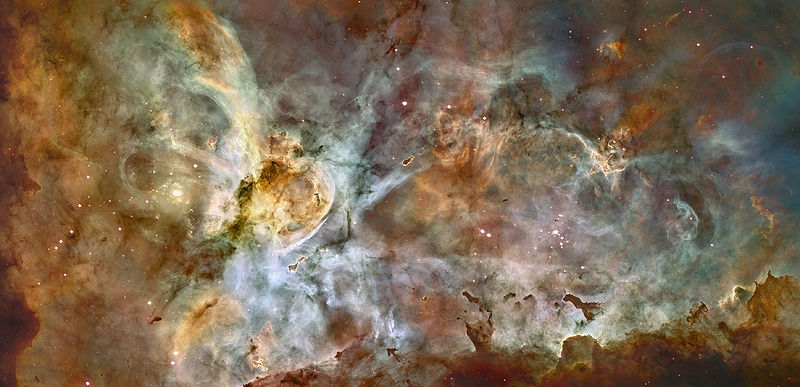 I grant this is just straight-up astroporn but let’s try to make it legit. It’s a picture taken in 2009 by the Hubble Space Telescope of NGC 3372, the great nebula in the constellation Carina, which is in the sky over the southern hemisphere. “Nebula” is an old astronomical word that has referred to a whole lot of unrelated objects, but in this case it means “cloud.” This cloud is 300 light-years across – the picture is only 50 light-years-worth of it — and in it, some stars are being born and some are dying, and in both cases, they’re kicking up a lot of dark dust and different-colored gases.
I grant this is just straight-up astroporn but let’s try to make it legit. It’s a picture taken in 2009 by the Hubble Space Telescope of NGC 3372, the great nebula in the constellation Carina, which is in the sky over the southern hemisphere. “Nebula” is an old astronomical word that has referred to a whole lot of unrelated objects, but in this case it means “cloud.” This cloud is 300 light-years across – the picture is only 50 light-years-worth of it — and in it, some stars are being born and some are dying, and in both cases, they’re kicking up a lot of dark dust and different-colored gases.
One of the dying stars is Eta Carinae; it’s the bright, white, over-exposed blob farthest left, in the middle and under the colon in AstroPorn. Eta Carinae is exploding, over and over again, blowing out stuff from both poles, though the explosions don’t seem to be killing the star off and no one knows quite why. Telescopes like zooming in on Eta Carinae.
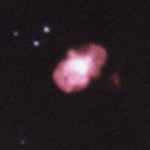
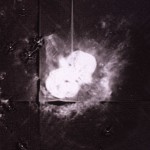
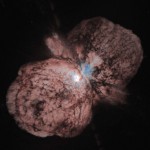
I remember the first picture I saw of Eta Carinae, taken in 1984 with a normal-sized telescope on the ground. And I remember being knocked out by the next picture of it, taken in 1991 by the Hubble after it launched but before the mirror was fixed. I hardly know what to say about the third picture of it, taken by the Hubble in 1996 with a fixed mirror and a new camera. When they say that astronomy has always been driven by the next new technology, believe them.
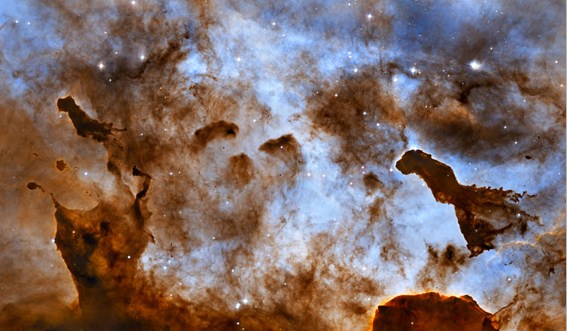
Back to the Carina Nebula, lower right: One of the stars being born you can’t really see because it’s hidden behind those dark, odd pillars. The star (maybe more than one) was a part of the cloud dense enough that its own gravity pulled it tighter and denser and condensed it so much that inside it hydrogen atoms fused into helium atoms and all hell broke loose and the cloud ignited into starshine. The starshine is ultraviolet radiation so violent it’s like a wind carving the nebula’s dust and gas into those dark shapes — a lot the way waves carve shapes into sand.
One astonishing thing about these photographs of the Carina nebula is that they’re photographs. They’re not art. All that glory is real and it’s really out there. I hope I’m not going into cardiac arrest.
Photo credits:
Great Carina Nebula: NASA, ESA, N. Smith (University of California, Berkeley), and The Hubble Heritage Team (STScI/AURA)
1984 photo: Australian Astronomical Observatory
1991: J. Hester/Caltech & NASA
1996 photo: Jon Morse (University of Colorado) and NASA
Starshine & pillars: M. Livio (STScI) and N. Smith (University of California, Berkeley), NASA, ESA, and the Hubble Heritage Team (STScI/AURA)